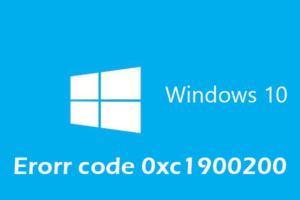-
Table of Contents
“Unmasking the Hidden Threat: Exposing Malware in 100+ Signed Windows Drivers”
Introduction:
Malware has become an increasingly prevalent threat in the digital landscape, with attackers constantly finding new ways to compromise systems and steal sensitive information. In a concerning development, it has been discovered that over 100 signed Windows drivers have been found to contain malware. This revelation raises serious concerns about the security of Windows systems and the potential for widespread compromise. In this article, we will explore the implications of this discovery and the steps that need to be taken to mitigate the risks posed by these malicious drivers.
The Impact of Malware in Over 100 Signed Windows Drivers
Malware has long been a concern for computer users, but a recent discovery has sent shockwaves through the cybersecurity community. Over 100 signed Windows drivers have been found to contain malware, raising serious questions about the effectiveness of digital signatures and the potential impact on user security.
Digital signatures are meant to provide a level of trust and assurance to users. When a driver is signed, it is essentially being vouched for by the company or individual who created it. This is intended to give users confidence that the driver is legitimate and has not been tampered with. However, the discovery of malware in signed drivers has shattered this trust and highlighted a significant vulnerability in the system.
The impact of this discovery cannot be overstated. Malware-infected drivers have the potential to wreak havoc on a user’s system. They can be used to gain unauthorized access, steal sensitive information, or even take control of the entire computer. The fact that these drivers were signed means that they could easily bypass security measures and go undetected by antivirus software.
One of the most concerning aspects of this discovery is the sheer number of affected drivers. With over 100 signed drivers found to contain malware, it is clear that this is not an isolated incident. This raises questions about the security practices of driver developers and the effectiveness of the digital signature process. If so many signed drivers are compromised, how can users trust any signed driver they come across?
The implications of this discovery go beyond individual users. Organizations that rely on signed drivers, such as businesses and government agencies, are also at risk. Malware-infected drivers could be used as a gateway for attackers to gain access to sensitive networks and systems. This could lead to data breaches, financial losses, and reputational damage.
The discovery of malware in signed drivers also highlights the need for better security measures and oversight in the driver development process. It is clear that the current system is not foolproof and that more needs to be done to ensure the integrity of signed drivers. This could include stricter vetting processes for driver developers, more frequent and thorough security audits, and improved detection and removal tools for malware.
In addition to these measures, it is also important for users to take steps to protect themselves. This includes keeping their operating systems and antivirus software up to date, being cautious when downloading and installing drivers, and regularly scanning their systems for malware. Users should also be aware of the risks associated with signed drivers and exercise caution when using them.
The discovery of malware in over 100 signed Windows drivers is a wake-up call for the cybersecurity community. It highlights the vulnerabilities in the current system and the need for better security measures. It also serves as a reminder to users to be vigilant and take steps to protect themselves. By addressing these issues, we can work towards a safer and more secure digital environment.
Analyzing the Techniques Used by Malware in Signed Windows Drivers
Malware has long been a persistent threat to computer systems, and its ability to infiltrate even seemingly secure environments is a cause for concern. Recently, researchers have discovered that over 100 signed Windows drivers contain malware, highlighting the sophistication and evolving techniques employed by cybercriminals.
Signed Windows drivers are typically considered trustworthy, as they undergo a rigorous verification process by Microsoft to ensure their authenticity and integrity. However, this recent discovery has shattered this perception, raising questions about the effectiveness of current security measures.
One technique employed by malware in signed Windows drivers is the use of rootkit functionality. Rootkits are malicious programs that enable unauthorized access to a computer system, allowing cybercriminals to gain control and remain undetected. By embedding rootkit functionality within signed drivers, malware can bypass security checks and gain elevated privileges, making it extremely difficult to detect and remove.
Another technique utilized by malware in signed Windows drivers is the use of code obfuscation. Code obfuscation involves deliberately making the code complex and difficult to understand, making it harder for security analysts to identify and analyze the malicious behavior. By obfuscating their code, malware authors can evade detection and prolong their presence within a compromised system.
Furthermore, malware in signed Windows drivers often employs anti-analysis techniques to hinder the efforts of security researchers. These techniques include the use of packers and encryption to conceal the true nature of the malware. Packers compress and encrypt the malicious code, making it difficult for traditional antivirus software to detect. Additionally, malware may employ anti-debugging techniques to prevent analysts from examining the code in a controlled environment, further complicating the analysis process.
The discovery of malware in signed Windows drivers also highlights the issue of supply chain attacks. Supply chain attacks occur when cybercriminals compromise a trusted vendor or supplier to distribute malware to unsuspecting users. By infiltrating the supply chain, malware authors can bypass security measures and gain access to a large number of systems. In the case of signed Windows drivers, the compromise of trusted vendors allowed malware to be distributed to users who believed they were installing legitimate software.
To combat the threat posed by malware in signed Windows drivers, it is crucial to enhance security measures and improve the verification process. Microsoft and other software vendors must strengthen their vetting procedures to ensure that signed drivers are free from malware. Additionally, security analysts and researchers must develop advanced techniques to detect and analyze obfuscated code, enabling them to identify and mitigate the risks posed by malware.
In conclusion, the discovery of malware in over 100 signed Windows drivers highlights the evolving techniques employed by cybercriminals. The use of rootkit functionality, code obfuscation, anti-analysis techniques, and supply chain attacks demonstrate the sophistication and persistence of malware authors. To effectively combat this threat, it is imperative that security measures are enhanced, and the verification process for signed drivers is strengthened. By doing so, we can better protect computer systems from the insidious threat of malware.
Preventive Measures to Combat Malware in Signed Windows Drivers
Malware has become an ever-present threat in today’s digital landscape, and it seems that even signed Windows drivers are not immune. In a recent discovery, over 100 signed Windows drivers were found to contain malware, raising concerns about the security of these supposedly trusted components of the operating system.
Signed Windows drivers are meant to provide a level of assurance to users that the software they are installing on their systems is legitimate and has been verified by Microsoft. However, this recent revelation has shattered that trust, leaving many wondering how such a breach could occur.
One possible explanation for this security lapse is the increasing sophistication of malware developers. As they become more adept at evading detection and infiltrating systems, they are finding new ways to exploit vulnerabilities in even the most trusted components of an operating system. This highlights the need for constant vigilance and proactive measures to combat malware.
One preventive measure that can be taken is to regularly update and patch software. Software developers are constantly releasing updates to address security vulnerabilities and fix bugs. By keeping your operating system and drivers up to date, you can ensure that you have the latest security patches installed, reducing the risk of malware infection.
Another important preventive measure is to use reputable sources for downloading software and drivers. Malware often disguises itself as legitimate software, so it is crucial to only download from trusted sources. Microsoft’s official website and reputable third-party vendors are good places to start. Avoid downloading from unknown websites or clicking on suspicious links, as these are common ways for malware to infiltrate your system.
Furthermore, it is essential to have robust antivirus software installed on your system. Antivirus software can detect and remove malware, providing an additional layer of protection against potential threats. Regularly update your antivirus software to ensure that it can effectively detect the latest malware variants.
In addition to these preventive measures, it is also important to practice safe browsing habits. Avoid visiting suspicious websites or clicking on pop-up ads, as these can often lead to malware infections. Be cautious when opening email attachments, especially if they come from unknown senders. Malware often spreads through email attachments, so exercise caution and use common sense when interacting with email.
Lastly, it is crucial to educate yourself and your employees about the risks of malware and the importance of following preventive measures. Regularly train your staff on safe browsing habits, the dangers of downloading from untrusted sources, and how to recognize potential malware threats. By empowering your employees with knowledge, you can create a culture of cybersecurity awareness within your organization.
In conclusion, the recent discovery of malware in signed Windows drivers serves as a stark reminder that no system is completely immune to cyber threats. However, by implementing preventive measures such as regularly updating software, using reputable sources for downloads, installing robust antivirus software, practicing safe browsing habits, and educating yourself and your employees, you can significantly reduce the risk of malware infections. It is crucial to remain vigilant and proactive in the fight against malware, as the consequences of a breach can be devastating.
The Future of Malware Detection and Mitigation in Signed Windows Drivers
Malware has long been a persistent threat to computer systems, and the discovery of over 100 signed Windows drivers infected with malware has raised concerns about the future of malware detection and mitigation. Signed Windows drivers are typically considered safe and trustworthy, as they have undergone a rigorous verification process by Microsoft. However, this recent revelation has shattered that perception and highlighted the need for improved security measures.
The discovery of malware in signed Windows drivers is a significant development in the world of cybersecurity. It demonstrates that even seemingly secure components of an operating system can be compromised. This poses a serious threat to the integrity and security of computer systems, as malware embedded in signed drivers can bypass traditional security measures and gain unrestricted access to the system.
One of the key challenges in detecting and mitigating malware in signed Windows drivers is the reliance on digital signatures as a trust indicator. Digital signatures are used to verify the authenticity and integrity of software components, including drivers. However, the presence of malware in signed drivers suggests that the current verification process is not foolproof. Malicious actors have found ways to bypass or manipulate the verification process, allowing them to distribute malware disguised as legitimate software.
To address this issue, there is a need for more robust and sophisticated malware detection techniques. Traditional antivirus software often relies on signature-based detection, which compares files against a database of known malware signatures. However, this approach is ineffective against new and unknown malware variants. Advanced techniques, such as behavior-based analysis and machine learning algorithms, can provide a more proactive and accurate detection mechanism.
Behavior-based analysis involves monitoring the behavior of software components, such as drivers, to identify any suspicious or malicious activities. By analyzing the actions and interactions of drivers within the system, it is possible to detect anomalies that may indicate the presence of malware. Machine learning algorithms can enhance this process by continuously learning from new data and improving their detection capabilities over time.
Another crucial aspect of malware detection and mitigation in signed Windows drivers is the collaboration between software developers, hardware manufacturers, and security researchers. The discovery of malware in signed drivers highlights the need for a collective effort to identify vulnerabilities and develop effective countermeasures. By sharing information and collaborating on security practices, the industry can stay one step ahead of malicious actors and minimize the impact of such incidents.
Furthermore, Microsoft and other operating system vendors must take a proactive approach to address this issue. They should invest in research and development to enhance the security of their verification processes and strengthen the overall security of their operating systems. Regular audits and updates to the verification process can help identify and rectify any vulnerabilities that may be exploited by malware authors.
In conclusion, the discovery of malware in over 100 signed Windows drivers has raised concerns about the future of malware detection and mitigation. It highlights the need for more robust and sophisticated detection techniques, such as behavior-based analysis and machine learning algorithms. Collaboration between software developers, hardware manufacturers, and security researchers is crucial in identifying vulnerabilities and developing effective countermeasures. Additionally, operating system vendors must take a proactive approach to enhance the security of their verification processes. By addressing these challenges, the industry can better protect computer systems from the ever-evolving threat of malware.
Q&A
1. What is malware found in over 100 signed Windows drivers?
Malware found in over 100 signed Windows drivers refers to malicious software that has been discovered in more than 100 digitally signed drivers used in the Windows operating system.
2. How does malware end up in signed Windows drivers?
Malware can end up in signed Windows drivers through various means, such as compromised development environments, supply chain attacks, or malicious actors exploiting vulnerabilities in the driver signing process.
3. What are the risks associated with malware in signed Windows drivers?
The risks associated with malware in signed Windows drivers include potential unauthorized access to sensitive data, system instability, unauthorized control of the affected system, and the ability for attackers to execute arbitrary code.
4. How can users protect themselves from malware in signed Windows drivers?
Users can protect themselves from malware in signed Windows drivers by keeping their operating system and drivers up to date, using reputable antivirus software, being cautious when downloading and installing drivers from untrusted sources, and regularly scanning their systems for malware.In conclusion, the discovery of malware in over 100 signed Windows drivers highlights a significant security concern. The presence of malware in signed drivers raises questions about the effectiveness of digital signatures as a security measure. This incident emphasizes the need for robust security measures and continuous monitoring to detect and mitigate such threats in order to protect users’ systems and data.







![[Solved]: “Error Code 0xC004F050” in Windows 11 in No Time](https://www.tipsbin.net/wp-content/uploads/2023/08/8e64f519d2390bfc001a41744be2cbd4-300x199.jpeg)

